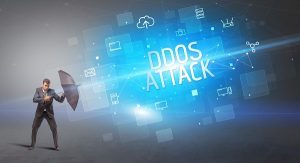
Your business cannot afford being a victim to internet criminals and cybersecurity threats. Your business could be exposed if it is harmed by a weak security system.
Cyberattacks are more common than ever and they are becoming more frequent. They are more common in small and medium-sized businesses.
A study found that 43% of cyberattacks target small businesses. Only 14% of small businesses are prepared for hackers.
Cyberattacks are not limited to small businesses. Identity theft can happen to anyone. It is important to be aware and alert for cybersecurity vulnerabilities.
What is Cybersecurity?
Cybersecurity refers to the protection of computer and network systems against harm and theft, including data, software, and hardware. It also helps businesses to find a way out of disruption.
Cybersecurity is not just about the internet or software attacks. Few people consider the physical components of computers. Cyberattacks can cause serious damage to the device.
Cybersecurity Protection Elements
Organizations must plan their cybersecurity efforts across the entire information system in order to have an impact on cybersecurity. These are the components of cybersecurity:
Network security: Protecting a company’s network against unwanted threats and attacks.
Application security: Continuous testing and updating is required to ensure that programs are safe.
Endpoint security: This is for companies that have remote access to their business network. The system can allow cybercriminals to take the data. Remote access to company network can be protected by endpoint security.
Data security: This is the protection of company and customer data within networks and applications.
Database and infrastructure security: Secures data and databases that are part of the company’s network.
Cloud security: Protects files and data stored in the cloud. This is a complex task because data protection requires a completely online environment.
ERP Cybersecurity Strategy
Enterprise Resource Planning or ERP, systems allow employees to collaborate more effectively and communicate with each other through a single database. Companies can run their business processes by using ERP systems.
These include supply chain management, manufacturing, finance, human resource management, and marketing. This system stores data that can be used for planning, decision-making and operational management.
ERP is a tool that can be used by partners and businesses involved in product development, sales campaigns, mergers and acquisitions. This means that more data flows and is available to many users. An ERP’s data flow will increase, exposing business information systems and software to more vulnerabilities.
ERP security is not often a primary consideration when choosing a provider. In recent years, ERP has become more vulnerable. Serious disruptions to ERP systems can cause financial and operational problems that could cost you your company time and money.
Cyberattack risks can be mitigated by an ERP system strategy. These are eight other cybersecurity vulnerabilities that businesses need to be aware of.
 Cybersecurity’s Top 8 Common Weaknesses
Cybersecurity’s Top 8 Common Weaknesses
Businesses can work with cybersecurity teams to achieve the following:
Unsecured Networks
Cybercriminals can gain access to your network if it isn’t secured. They can access all systems and devices connected to the network once they are infiltrated.
Unsecured Communication Channels
Companies exchange sensitive information frequently, so it is important to protect all communication channels. An encrypted email platform can be a great way to communicate with clients securely.
Old Systems
Hardware engineers and software developers are constantly looking for security threats that could harm users. They patch the problem to fix it once they have found it. To make a patch work, hardware and software must be updated at the device level.
Businesses can be put at risk by outdated systems. Software and devices can be set to automatically update to receive any patches that are available to correct known security flaws.
Unknown Bugs
Cybercriminals can gain easy access to user accounts through bugs in an app. This could be due to a bug in the software programming interface that integrates two apps. You could also be experiencing a problem with software from a third-party.
It is impossible to detect and prevent every bug. You can improve security by scanning your applications regularly and carefully vetting vendors.
Cybersecurity strategy lacking
Many businesses don’t have a comprehensive strategy to address their cybersecurity needs. Many businesses don’t have a high-end strategy for their cybersecurity needs.
Strategic approaches set the scene for security priorities and serve as a guide to anticipating and responding in case of attacks.
Inadequacy of monitoring
You should monitor traffic and be proactive in scanning for ransomware and distributed denial-of-service attacks. Businesses are at risk from these types of intrusions if they don’t have proper monitoring. Modern monitoring also integrates artificial intelligence for vigilance.
Employee Training is a Problem
90% of data breaches are due to human error. When an employee gives a password to another person, this is called a “password swap”. They then gain access to company data which opens the door to attacks.
Employees are taught best practices in cybersecurity by training them. They learn how to use strong passwords and identify attacks in advance.
Companies should ensure that employees receive consistent training in order to retain information.
Internet of Things and Multiple Connect Points
One of many technologies that companies can use to leverage their business is the IoT (Internet of Things). This could involve multiple connections to a single network. IoT offers businesses greater productivity and efficiency but it also presents vulnerabilities.
To mitigate threats, it is important to be prepared for remote access security threats.
Final Cybersecurity Measures
Security risks should be communicated to the entire workforce as part of a company’s cybersecurity efforts.
Employees are also the last and most important line of defense. A strong team and collaboration between the upper management is key to business security. When there is a disconnect between operations and teams, common weaknesses can often be present.
You can take a stand on cybersecurity and embed it in your operations. This will ensure that everyone is on the same page regarding responsibility.
A security-minded, ownership-focused culture is key to ensuring resilience. For cybersecurity initiatives to be effective, organizations must make changes and show constant commitment.
Awareness and preparation are key to successful implementation. Companies that document and test risk mitigation plans reduce risk and increase client confidence.
Prevent data breaches
Organizations must continue to plan for cybersecurity maturity and risk planning. These essentials will ensure that your organization is agile, adaptable, and alert to emerging threats.
Call SpartanTec, Inc. now if you want to boost your company’s online security measures to prevent cyberattacks.
SpartanTec, Inc.
Fayetteville, NC 28304
(910) 745-7776
http://manageditservicesfayetteville.com
Serving: Myrtle Beach, North Myrtle Beach, Columbia, Wilmington, Fayetteville, Florence, Charleston



 What is a distributed denial-of-service attack (DDoS)?
What is a distributed denial-of-service attack (DDoS)? Although there is no way to avoid being a victim of DoS attacks or DDoS attacks, administrators can take proactive steps to minimize the impact of such attacks on their network.
Although there is no way to avoid being a victim of DoS attacks or DDoS attacks, administrators can take proactive steps to minimize the impact of such attacks on their network. It is crucial to get assistance from the right technical or
It is crucial to get assistance from the right technical or 

 Make sure your teams are aware of their local CISA representatives and FBI field offices. Also, ensure that they are on their mailing list to keep up with alerts and warnings. To increase awareness and build a collective defense, share anomalous and malicious cyber activity with local and federal partners.
Make sure your teams are aware of their local CISA representatives and FBI field offices. Also, ensure that they are on their mailing list to keep up with alerts and warnings. To increase awareness and build a collective defense, share anomalous and malicious cyber activity with local and federal partners.
 Cybersecurity’s Top 8 Common Weaknesses
Cybersecurity’s Top 8 Common Weaknesses

